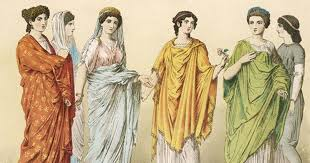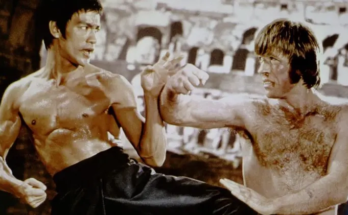Daily Life in Ancient Rome was like to walk in the sandals of an ancient Roman, the Roman Empire wasn’t just about gladiator battles, majestic temples, and Julius Caesar’s conquests it was also a bustling civilization teeming with ordinary people living extraordinary lives. Let’s dive into the streets, homes, and marketplaces of ancient Rome to uncover the daily routines, customs, and quirks of one of history’s most fascinating societies.

Introduction to Roman Daily Life
Living in ancient Rome was a mix of structure, culture, and adaptability. With a population reaching over a million at its height, Rome was a melting pot of people from various provinces. Whether you were a wealthy patrician or a struggling plebeian, life in Rome offered a unique blend of challenges and opportunities.
Roman Social Classes
The Patricians: The Upper Crust

Patricians were the elite ruling class, living in grand villas with intricate mosaics and lush gardens. They enjoyed political influence and lavish feasts, with menus featuring exotic delicacies like flamingo tongues.
The Plebeians: The Backbone of Rome
Plebeians were the working-class citizens. They often lived in cramped, multi-story apartment blocks called insulae. Their diet was simple—bread, olives, and the occasional meat treat. Despite their modest means, they played a vital role in Rome’s economy.
Slaves and Freedmen
Slaves made up a significant portion of the population. They worked in homes, fields, and mines. Some gained freedom and became liberti, blending into Roman society as skilled artisans or merchants.
The Architecture of Everyday Life
Roman Homes
The layout of Roman homes varied with wealth. Wealthy families lived in spacious domus, complete with courtyards and fountains. Meanwhile, commoners resided in insulae, prone to fire hazards and structural collapses.
Public Baths: The Community Hubs
Bathhouses, or thermae, were a cornerstone of Roman social life. They offered more than hygiene—they were places to gossip, exercise, and relax. Entry was affordable, making them accessible to most Romans.
Food and Dining in Rome
Meals of the Day
Romans typically ate three meals:
- Ientaculum (breakfast): A light meal of bread and cheese.
- Prandium (lunch): A quick, often cold meal.
- Cena (dinner): The main meal, where the wealthy indulged in multi-course feasts.
Popular Foods and Beverages
Romans loved bread, olive oil, and wine. They also enjoyed garum, a fermented fish sauce used to flavor dishes, much like soy sauce in modern times.
Clothing and Fashion
Togas and Tunics
The toga was a symbol of Roman citizenship, worn mainly by men during formal occasions. Tunics were the everyday attire for both men and women, often dyed with vibrant colors to signify status.
Jewelry and Accessories
Roman women adorned themselves with gold, gemstones, and intricate hairstyles. Men preferred simpler adornments, such as signet rings.
Entertainment and Leisure
The Colosseum and Gladiator Games
The Colosseum was the epicenter of Roman entertainment. Citizens gathered to watch gladiators, often slaves or prisoners, battle to the death in thrilling spectacles.
Theatres and Chariot Races
Romans loved drama and comedy plays performed in open-air theaters. Chariot races at the Circus Maximus drew massive crowds, rivaling modern-day sports events.
Education and Learning
The Roman School System
Education was highly valued for the elite. Boys studied rhetoric, grammar, and philosophy, while girls learned domestic skills. Slaves often acted as tutors in wealthy households.
Libraries and Scrolls
Rome’s public libraries housed scrolls and texts on philosophy, law, and science. Wealthy Romans often had private collections in their homes.
Religion and Spiritual Practices
The Roman Pantheon
Romans worshiped a pantheon of gods and goddesses like Jupiter, Mars, and Venus. Temples were central to their religious life.
Festivals and Celebrations
The Roman calendar was packed with festivals. Saturnalia, a winter celebration, was a time of gift-giving and merriment, similar to Christmas today.
Work and Economy
Trades and Crafts
Artisans, blacksmiths, and potters were crucial to Rome’s economy. Markets buzzed with activity as vendors sold goods ranging from pottery to fresh produce.
Farming and Agriculture
Agriculture was the backbone of Rome’s economy. Crops like wheat, barley, and grapes flourished in the Mediterranean climate.
Health and Medicine
Medical Practices
Roman medicine combined practical remedies with spiritual rituals. Doctors used tools like scalpels and forceps, while healers relied on herbal concoctions.
Public Health Initiatives
Rome pioneered public health with aqueducts delivering fresh water and sewers keeping the city clean a revolutionary concept for the era.
Military Influence on Daily Life
The Role of Soldiers
Roman soldiers weren’t just warriors; they were builders and engineers. Their constructions, from roads to forts, shaped the empire’s landscape.
Veterans and Retirement
Retired soldiers often received land as a reward for their service, settling in Roman colonies and contributing to local communities.
Also Check: White Nationalism and Online Radicalization: Unmasking the Alt-Right
Travel and Transportation
Roads and Highways
Rome’s extensive road network, famously paved and durable, connected cities and facilitated trade. The saying “All roads lead to Rome” wasn’t just a metaphor it was a logistical reality.
Modes of Transport
Chariots, carts, and ships were common means of transport. Wealthy Romans traveled in style, while the poor relied on foot or simple carts.
Law and Order
Roman Legal System
Rome’s legal system was a model of fairness (for its time). Citizens had the right to a trial, and Roman law influenced modern legal principles.
Crime and Punishment
While laws were comprehensive, punishments could be harsh. Public executions were a deterrent, but minor offenders often faced fines or labor.
Love and Marriage
Courtship and Weddings
Marriages were often arranged, but love wasn’t absent in Roman relationships. Wedding ceremonies were elaborate, featuring vows, feasts, and blessings.
Family Life
The Roman family, or familia, was patriarchal. The father, or paterfamilias, held significant authority, but women managed the household with skill.
Funerary Practices and Afterlife Beliefs
Burial Customs
Romans believed in honoring the dead with proper burials. Wealthy families built elaborate tombs, while commoners used communal cemeteries.
The Roman Afterlife
Beliefs about the afterlife varied, with some envisioning paradise-like fields and others a gloomy underworld ruled by Pluto.
Conclusion
Living like a Roman was a tapestry of contrasts lavish and austere, disciplined and indulgent, local and cosmopolitan. While their empire eventually fell, the echoes of their daily lives still resonate in our cities, laws, and culture. So, the next time you stroll through a park, enjoy a hearty meal, or take a hot bath, remember: you’re living a little like a Roman.
Also Check: The Impact of Colonialism on Nigerian Culture and Identity
FAQs
What did Romans eat for breakfast?
Romans typically ate bread with cheese or honey for breakfast, often accompanied by fresh fruit or olives.
How did Romans entertain themselves?
Romans enjoyed gladiator games, theater performances, chariot races, and socializing at public baths.
Were Roman women educated?
Wealthy Roman women often received private education in subjects like literature and music, but their education focused on domestic skills.
What was a Roman insula?
An insula was a multi-story apartment building where the urban poor lived. These structures were often overcrowded and prone to fires.
How did Romans travel long distances?
Romans traveled on a network of well-paved roads using chariots, carts, or ships, depending on the destination.


